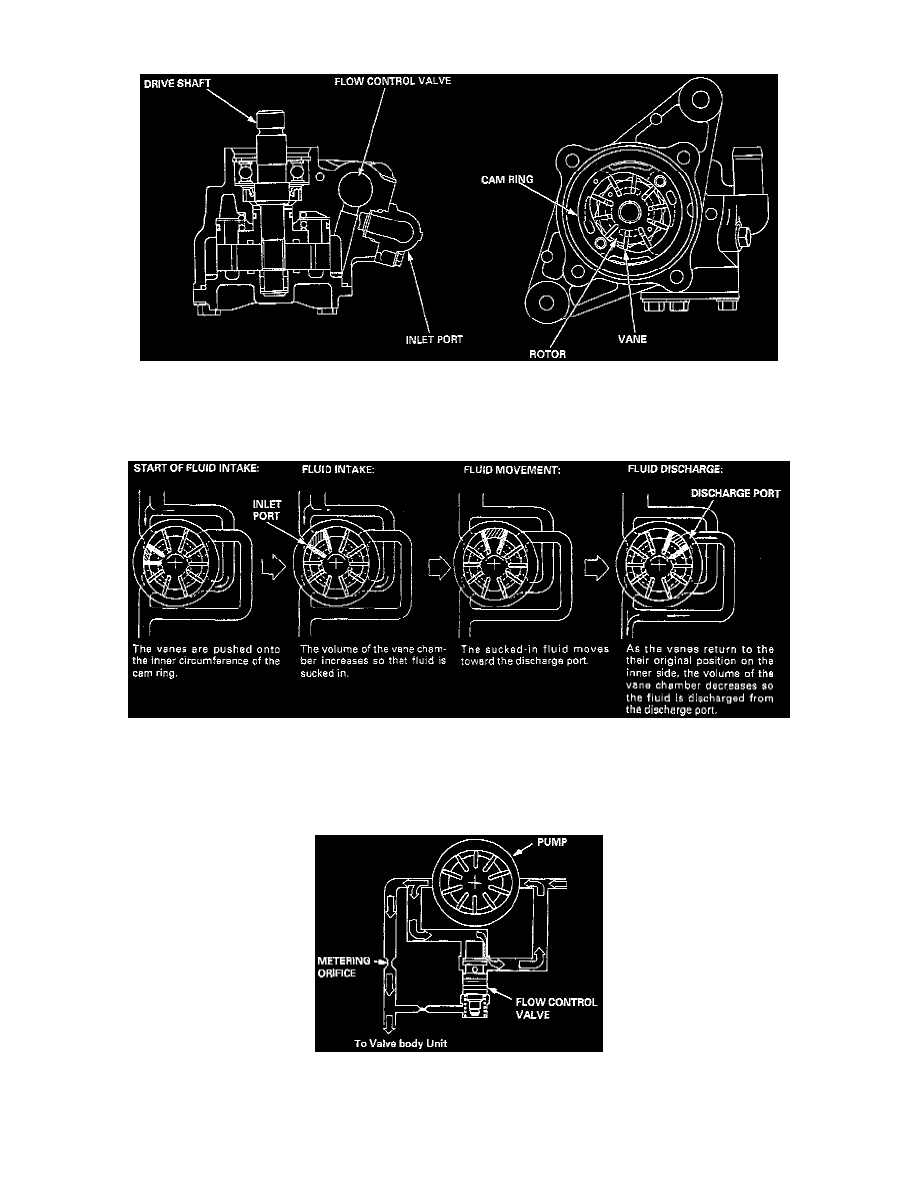TL L5-2451cc 2.5L SOHC MFI (1997)

Power Steering Pump: Description and Operation
CONSTRUCTION
The pump is a vane-type incorporating a flow control valve (with an integrated relief valve) and is driven by a POLY-V-belt from the crank pulley.
The pump features 10 vanes. Each vane performs two intake/discharge operations for every rotation of the rotor. This means that the hydraulic fluid
pressure pulse becomes extremely small during discharge.
OPERATION
The belt-driven pulley rotates the rotor through the drive shaft. As the rotor rotates, the hydraulic pressure is applied to the vane chamber of the rotor
and the vanes will rotate while being pushed onto the inner circumference of the cam ring. The inner circumference of the cam ring has an extended
portion with respect to the center of the shaft, so the vanes move downward in the axial direction as the rotor rotates. As a result of this roller
movement, the internal volume of the vane chamber will change, resulting in fluid intake and discharge.
FLOW CONTROL
Fluid from the pump runs through a metering orifice to the valve body unit. This creates a pressure difference between the pump and valve body unit
sides of the orifice. When pressure in the pump side is higher than the force of the spring holding the flow control valve closed, it pushes the valve
down (open), and excess fluid returns to the pump inlet. The combined effect of the metering orifice and the flow control valve provides a relatively
